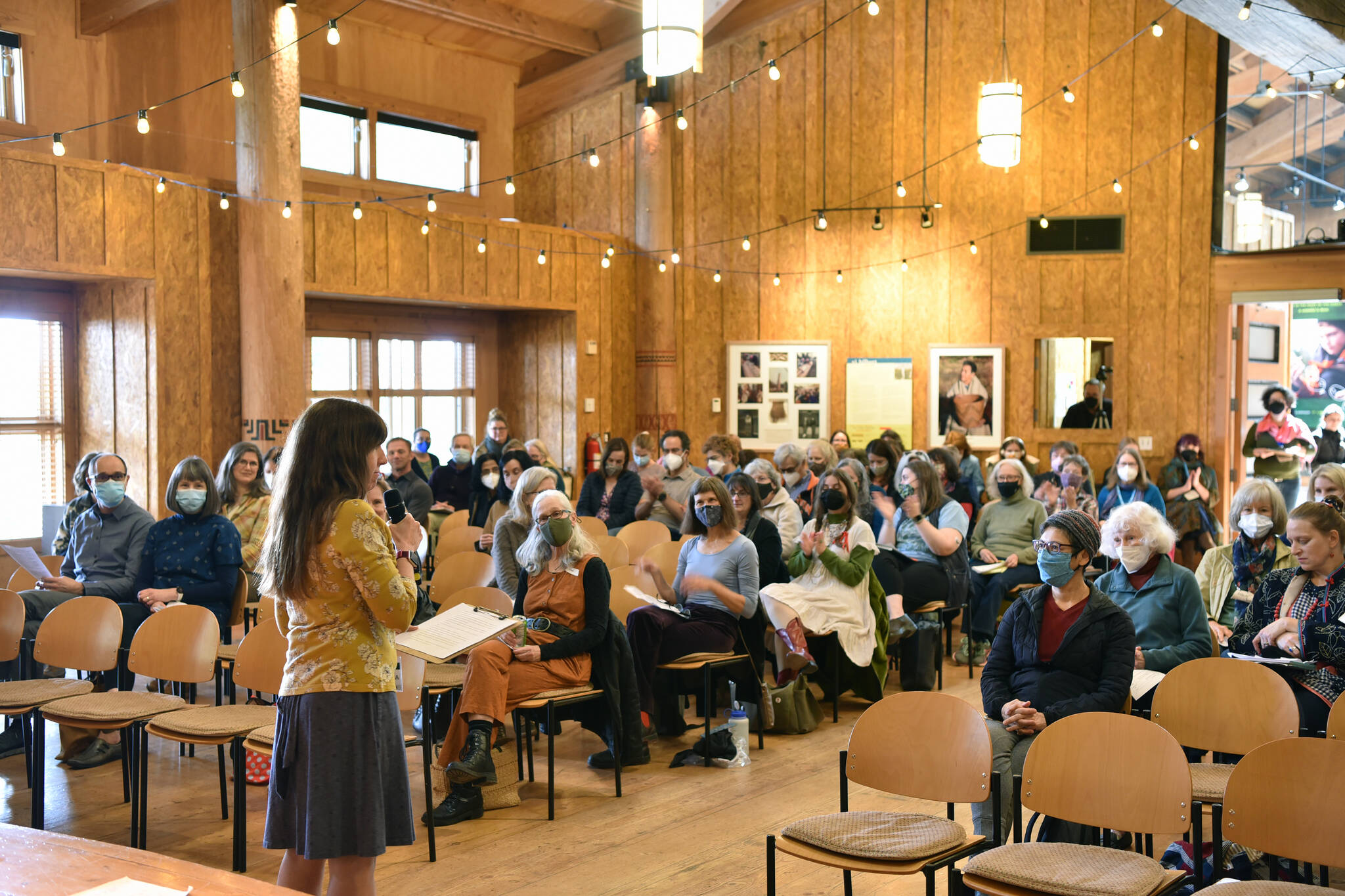Be fashionable: Fight fast fashion.
That was part of the message one of the keynote speakers made at the 2022 Bainbridge Environmental Conference hosted by Refashion Bainbridge Sunday that attracted more than 140 people to IslandWood. Attendees were encouraged to rethink the role of fashion’s impact on the world by participating in group discussions and going to workshops such as repairing clothing.
Professor Mathew Isaac from the Seattle University Albers School of Business and Economics spoke about the psychology of acquisition and why consumers buy and keep products they barely need and rarely use.
Isaac said the fashion industry produces 100 billion new garments a year to promote 52 micro-seasons. Due to strategies that have adapted the hierarchy of needs into marketing campaigns, the desire to acquire possessions has become an extension of self and a way to send signals of conformity or divergence.
“We buy because we want to signal our own individuality,” he said. As a result of fast fashion, Americans throw away 81 pounds of clothing a year. Isaac said it’s important to recognize our consumption biases, so we can change our consumption of clothing. If we embrace attachment to clothing, we are less likely to dispose of it.
Lina Lipski is chief executive officer, founder and operator of Olympic Yarn and Fiber, a Washington-based artisan yarn manufacturing mill that uses locally produced products in all of her yarns and textiles. Lipski shared how she uses dyes and water to reduce her impact on the environment and shared how local natural textiles support a healthier planet.
She said the positive effects of buying local means more money and more taxes stay in the community. Local businesses contribute more to local charities, and locally sourced and unique products increase tourism. “Local-based production has a strong incentive to not pollute or overuse resources,” she said.
Stacy Flynn, CEO and founding partner of Evrnu and Nucycl, shared cutting-edge innovations her company is making to recycle textile waste into new products. Flynn said the clothing industry throws away 90 million tons of textile waste a year; 60% of that is made from polymers and 30% from cotton. She has developed processes to recycle those materials into new fibers that can then be made into new textiles.
Fashion designer Stella McCartney has worked with Flynn to make a full-fashioned jacquard knit hoodie with some of Flynn’s recycled yarn, and the Levi’s brand has made prototype jeans that look and wear just like the original. Flynn said the fashion industry is plowing through resources at an alarming rate and innovation in recycling textile waste can’t come fast enough: “We have about twenty years to undo one-hundred years of textile waste. We’ve got to change.”
Attendees learned how to buy less clothing, mend damaged items, dispose of less, and heard from local scientists about the health affects of toxic chemicals in clothes and microfibers in our environment.



